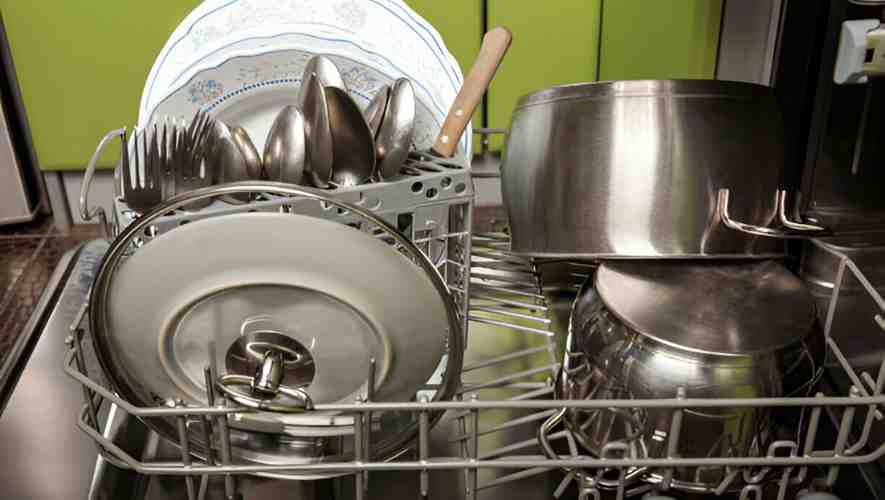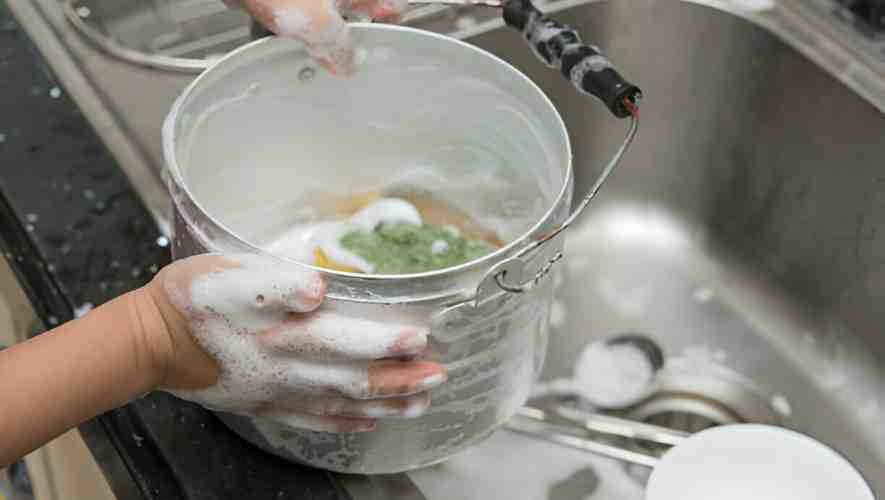Wondering if you can toss your crock-pot bowl in the dishwasher? Well, let’s break it down real simple-like. First off, cleaning your slow cooker can sometimes be a real chore, especially after a hearty meal that leaves behind a bunch of stains. The good news? Most slow cookers come with a removable portion—that’s the bowl part. This makes it a heck of a lot easier to clean up.
Now, when it comes to dishwashers, they’re all about making clean-up a breeze, right? So, the big question is whether that removable part of your slow cooker, the crock-pot bowl, can handle the hustle and bustle of a dishwasher cycle. It’s a common way to clean up lots of kitchen stuff, but it’s key to know if your product is dishwasher safe.
What you need to do is check out your slow cooker’s guide. Some brands design their bowls to be dishwasher-friendly, which means you can just remove that bowl, pop it in the dishwasher, and let it do its thing. No fuss, no muss. That way, you’re saving time and your efforts for something way more fun than scrubbing! So, before you wash, always take a quick peek at what your slow cooker can handle when it comes to getting rid of those pesky leftovers and stains.
Is Your Slow Cooker Bowl Dishwasher Safe? Check the Specs

When it comes to cleaning up after a meal, knowing whether your slow cooker bowl is dishwasher safe can save you a lot of time and hassle. Let’s dive into what you need to check to ensure your crock-pot stays in tip-top shape.
Understanding Your Slow Cooker’s Materials
First things first, let’s talk about what your slow cooker is made of. Most slow cooker bowls are either ceramic or glass, and many come with a glass lid. The material can hugely impact whether it’s dishwasher safe. Ceramic is generally sturdy and can handle the high temperatures of a dishwasher, but always check the manufacturer’s guidelines to be sure.
Check the Product Specifications
Before you throw your slow cooker bowl in the dishwasher, take a minute to look at the product specifications. These details are usually found in the user manual that came with your appliance. Look for keywords like “dishwasher safe” or specific instructions on care. This is crucial because some models might have removable parts that are safe for the dishwasher, while the main housing is not.
Washing the Slow Cooker Properly
If your slow cooker bowl is dishwasher safe, make sure you remove any large food particles before washing. Place it in the dishwasher away from other dishes if possible, to avoid banging around during the wash cycle which can cause chips or cracks. If it’s not safe for the dishwasher, washing it by hand in warm, soapy water is your best bet. Use a soft cloth or sponge to avoid scratching the surface.
For those tricky bits of residue that won’t come off easily, soaking the bowl in warm soapy water before scrubbing can help lift those stubborn spots. Be gentle and take your time—the goal is to keep your crock-pot in great shape so it can continue to make those warm, comforting dishes without any hiccups.
Best Ways to Clean Your Slow Cooker: Dishwasher or Hand Wash?

Keeping your slow cooker clean isn’t just about good hygiene—it’s about keeping the appliance in prime working order so it can do its job right every time. Whether you’re a dishwasher devotee or a hand-wash enthusiast, we’ve got the scoop on the best ways to keep your slow cooker spick and span.
Dishwasher Cleaning: Fast and Convenient
For many, the dishwasher is the go-to for easy cleanup. If your slow cooker is labeled “dishwasher safe,” this method can be a real time-saver. Here’s how to make the most out of this cleaning method:
- Check the Manual: Always verify what the manufacturer says about dishwasher use. Some slow cookers have removable pots that are dishwasher safe, while others might require the base to stay dry and clean.
- Prep Your Pot: Remove any large leftovers to prevent clogging your dishwasher. If there’s a lot of residue, a quick rinse under hot water before loading can help.
- Load It Right: Place the ceramic pot and glass lid (if dishwasher safe) securely in the dishwasher, ensuring they don’t rattle around. This prevents any chipping or cracking.
Hand Washing: Gentle and Thorough
Hand washing might take a bit more elbow grease, but it gives you control over the cleaning process, which can be gentler on your appliance, especially if it’s not fully dishwasher safe.
- Warm Soapy Water Works Wonders: Fill the slow cooker with warm water and add a squirt of dish soap. Let it sit for a few minutes to loosen any stuck-on bits.
- Use the Right Tools: A soft cloth or sponge is ideal for cleaning. Avoid using abrasive scrubbers which can scratch ceramic and glass surfaces.
- Rinse and Dry: After scrubbing, rinse the pot and lid with warm water to remove any soapy residue. Dry with a soft towel or let it air dry completely before storing.
Extra Tips for Stubborn Residues
Sometimes, you encounter stubborn spots that won’t come off with normal washing. Here’s what to do:
- Baking Soda Paste: Mix a little water with baking soda to make a paste. Apply this to the stubborn spots and let it sit for a few minutes before scrubbing gently.
- Vinegar for the Finish: If you notice water spots or want to ensure a thorough clean, wiping down the slow cooker with a cloth dipped in vinegar can provide a sparkling finish.
Can Your Crockpot Be Washed in the Dishwasher? Find Out How

Wondering if your crockpot can take a spin in the dishwasher? Well, let’s get right to it and figure out the best way to clean it up after your latest cook-up—without the fuss.
First off, check if your crockpot’s liner, often made of removable stoneware, is dishwasher safe. This info is usually right in the manual that came with your crockpot. If it says it’s cool for the dishwasher, you’re in luck because that makes cleanup a breeze. Just lift that liner out and slide it into the dishwasher. Make sure it’s not wedged too tight against other dishes or cookware because you don’t want it to chip or crack.
Now, if your crockpot’s material isn’t meant for the dishwasher, don’t sweat it. You can still clean it pretty easily. Fill it up with hot soapy water and let it soak a bit. This’ll help loosen any stubborn stains or bits stuck to the sides. After it’s had some soak time, grab a sponge—not the scratchy side, though—and give it a gentle scrub. Once you’ve got it looking all nice and clean, rinse it out well and make sure to dry it thoroughly with a towel. Leaving it wet can lead to water spots or worse, a bit of mildew, and nobody wants that showing up the next time they’re ready to cook.
Here’s a tip that might be helpful: if you’re dealing with some really tough stains that just won’t quit, try making a paste with some baking soda and water. Coat the tricky spots with it, let it sit for a few hours or even overnight, then come back with that sponge and warm water. It should do the trick.
Whether your crockpot is old school or the latest model, keeping it clean is key for its longevity and performance. Plus, it’s always nice to start fresh when you’re whipping up something new. Just remember these tips and keep that crock looking like new, wash after wash.
Conclusion
In conclusion, whether you choose to pop your crockpot components into the dishwasher or you decide to stick with the tried-and-true method of hand washing in the sink, knowing the proper cleaning techniques is essential. Always dip back into the manufacturer’s specifications to avoid any concerns, like sudden temperature changes that might crack your stoneware when moving from hot soapy water to cold water. Cleaning your crockpot isn’t just a chore—it’s part of the care that keeps your favorite family meal-maker in ideal working order. So, next time you finish up dinner, don’t let sticky leftovers set in. A quick, proper clean can make all the difference, ensuring that your crockpot is ready and waiting for whatever recipe you dream up next.
